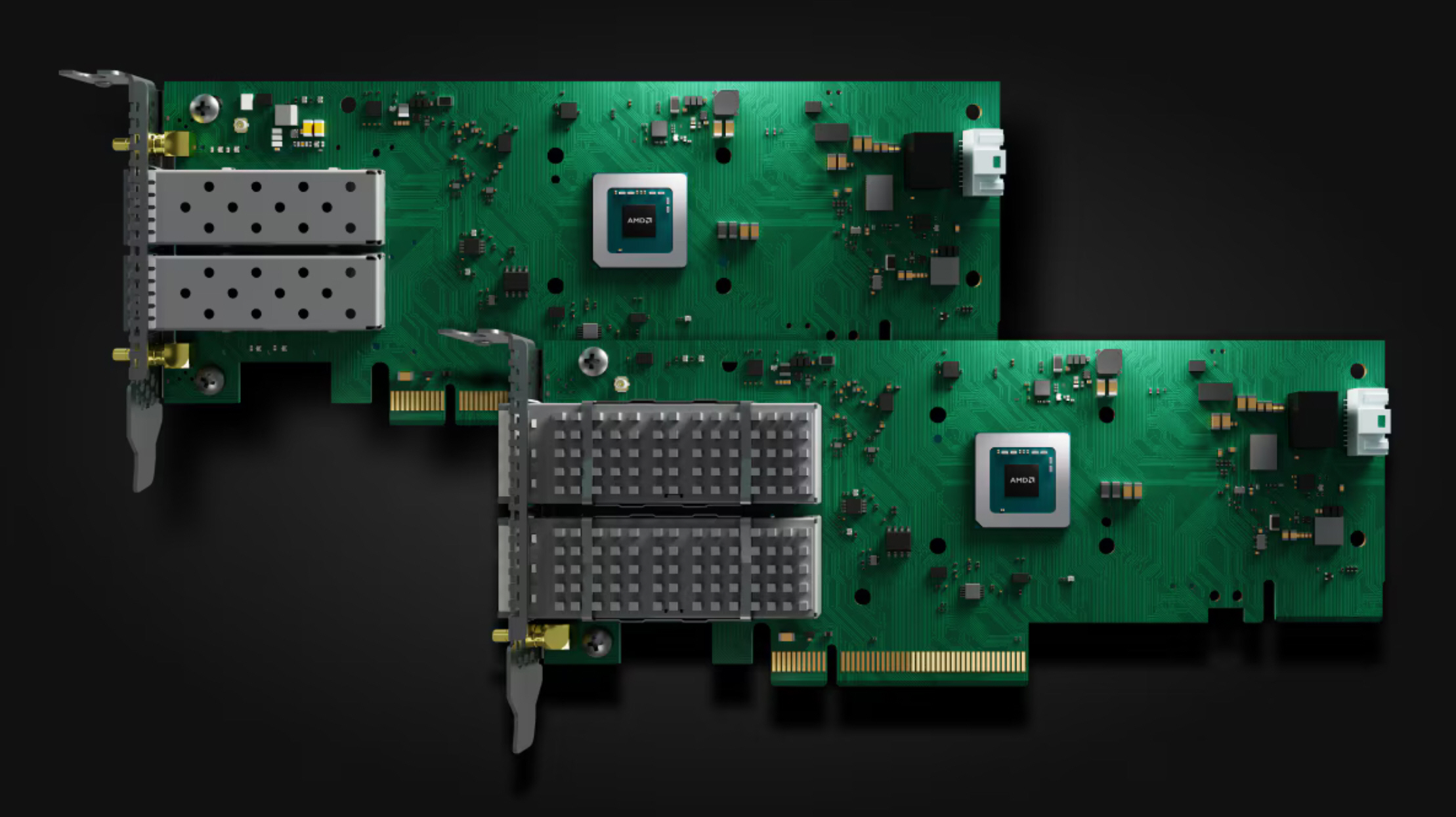AMD quietly launched a new product which could soon prove immensely useful for AI inference and beyond
Solarflare X4 adapters extend AMD's low-latency networking expertise

- Low latency networking is becoming vital for faster and more efficient AI inference
- AMD’s Solarflare X4 adapters extend proven trading technology into real-time AI environments
- Consistent sub-microsecond performance could improve reliability in data-driven edge applications
AMD has unveiled the Solarflare X4 Ethernet Adapters, its newest generation of ultra-low latency network interface cards.
Although these adapters have been built with high-frequency trading in mind, their capabilities mean they could also play a role in AI inference workloads that demand rapid data movement and predictable response times.
Low latency is increasingly critical for AI inference when any delay can limit performance or accuracy.
Cut Through Programmed Input Output
AI inference depends on data moving quickly between machines, and network speed obviously plays a major role in how fast results appear.
The Solarflare X4 series builds on technology that has long served the financial sector. It includes two main models: the X4522, which supports dual SFP56 ports up to 50GbE each, and the X4542, which uses dual QSFP56 ports for up to 100GbE.
Both feature a mode known as Cut Through Programmed Input Output, which begins transmitting packets before they fully cross the PCIe bus, reducing processing delays.
While AMD’s adapters do not match the raw speed of 400G or 800G networking hardware, they have the advantage of maintaining sub-microsecond latency with high consistency.
Sign up to the TechRadar Pro newsletter to get all the top news, opinion, features and guidance your business needs to succeed!
As well as being an appealing choice financial systems, they are also useful for emerging AI workloads that require real-time inference at the edge.
The adapters work alongside AMD’s Onload software, which can offload data movement tasks from the CPU, freeing up processing power for inference tasks, computations, analytics, and control operations.
The benefit of reduced latency can translate into faster and more reliable responses for AI applications running in autonomous systems, smart manufacturing, or content delivery environments.
The Solarflare X4 series might be designed for specialized markets but networking hardware optimized for speed and predictability could benefit a range of data-driven industries.
AMD’s move could turn out to be one of its more strategic recent releases, linking decades of low-latency networking expertise with the growing demand for super efficient AI inference.
Follow TechRadar on Google News and add us as a preferred source to get our expert news, reviews, and opinion in your feeds. Make sure to click the Follow button!
And of course you can also follow TechRadar on TikTok for news, reviews, unboxings in video form, and get regular updates from us on WhatsApp too.
You might also like

Wayne Williams is a freelancer writing news for TechRadar Pro. He has been writing about computers, technology, and the web for 30 years. In that time he wrote for most of the UK’s PC magazines, and launched, edited and published a number of them too.
You must confirm your public display name before commenting
Please logout and then login again, you will then be prompted to enter your display name.